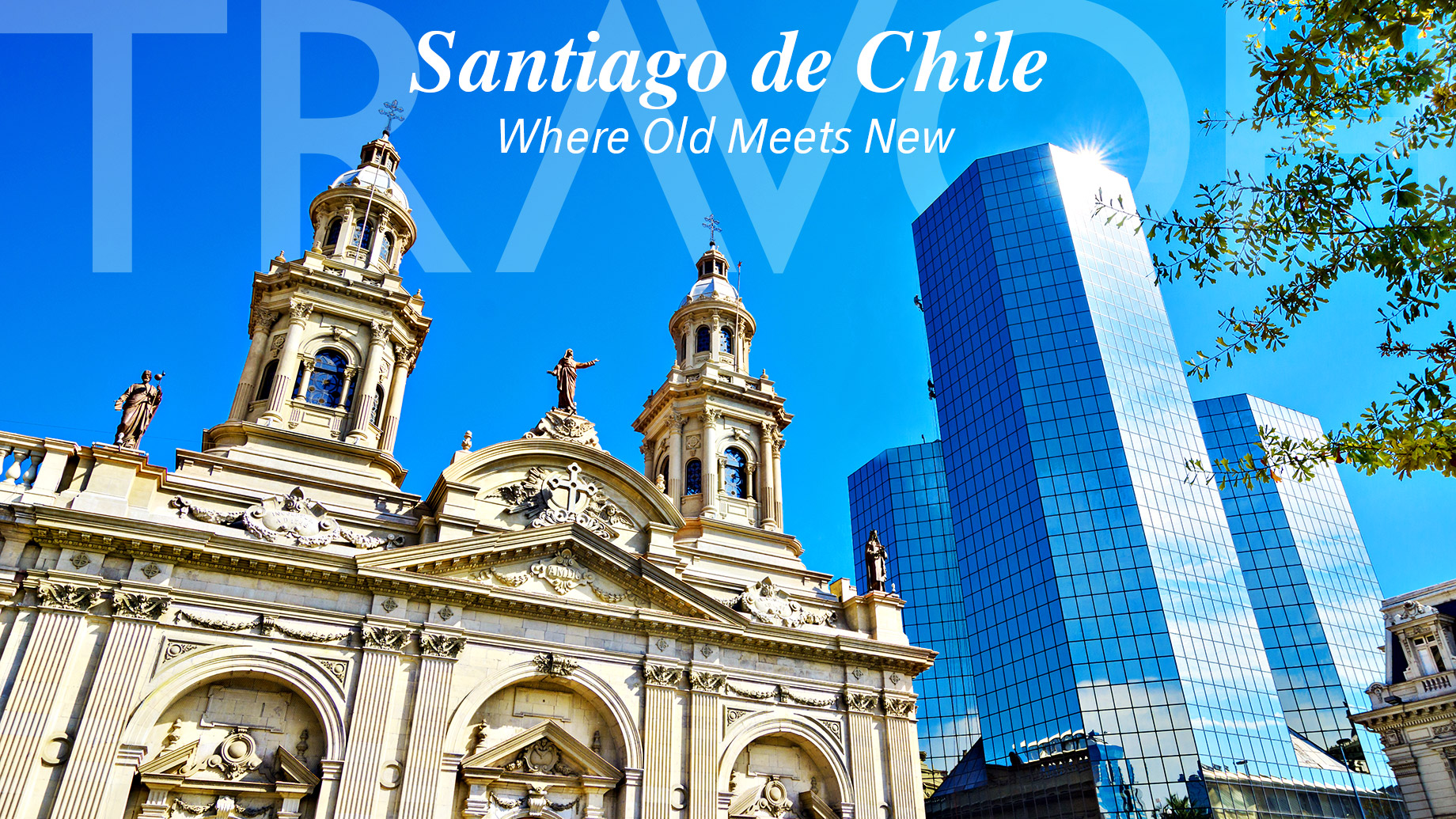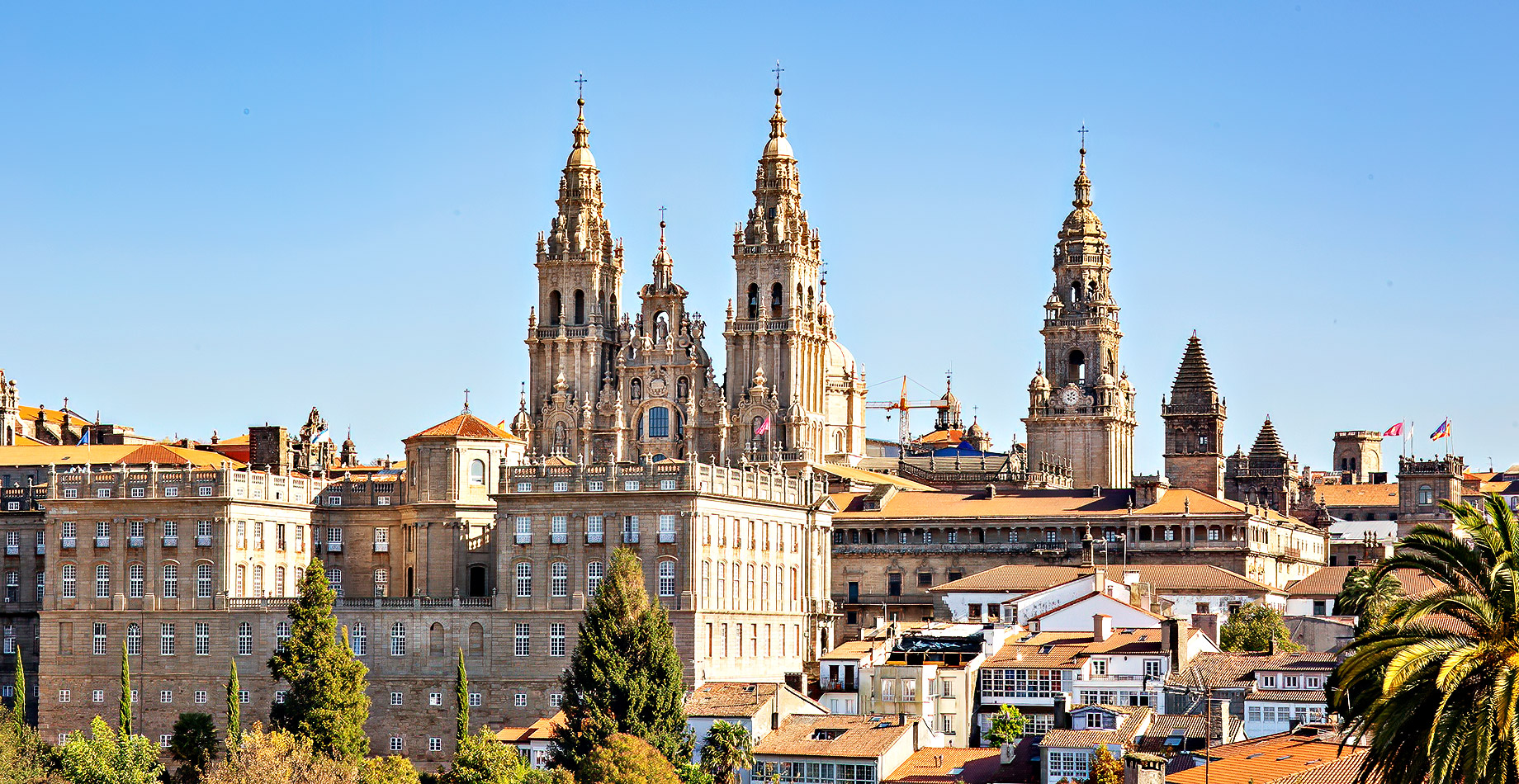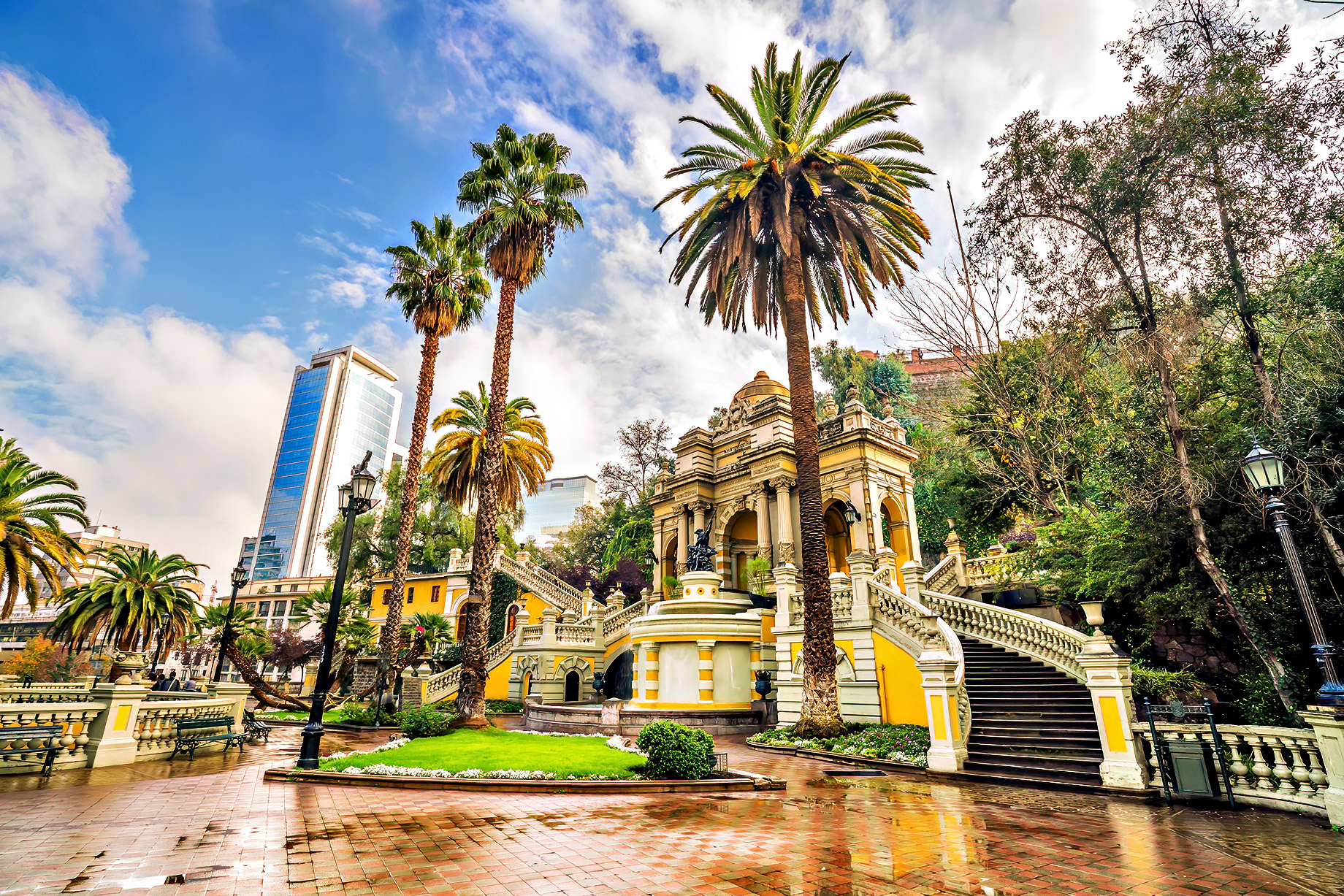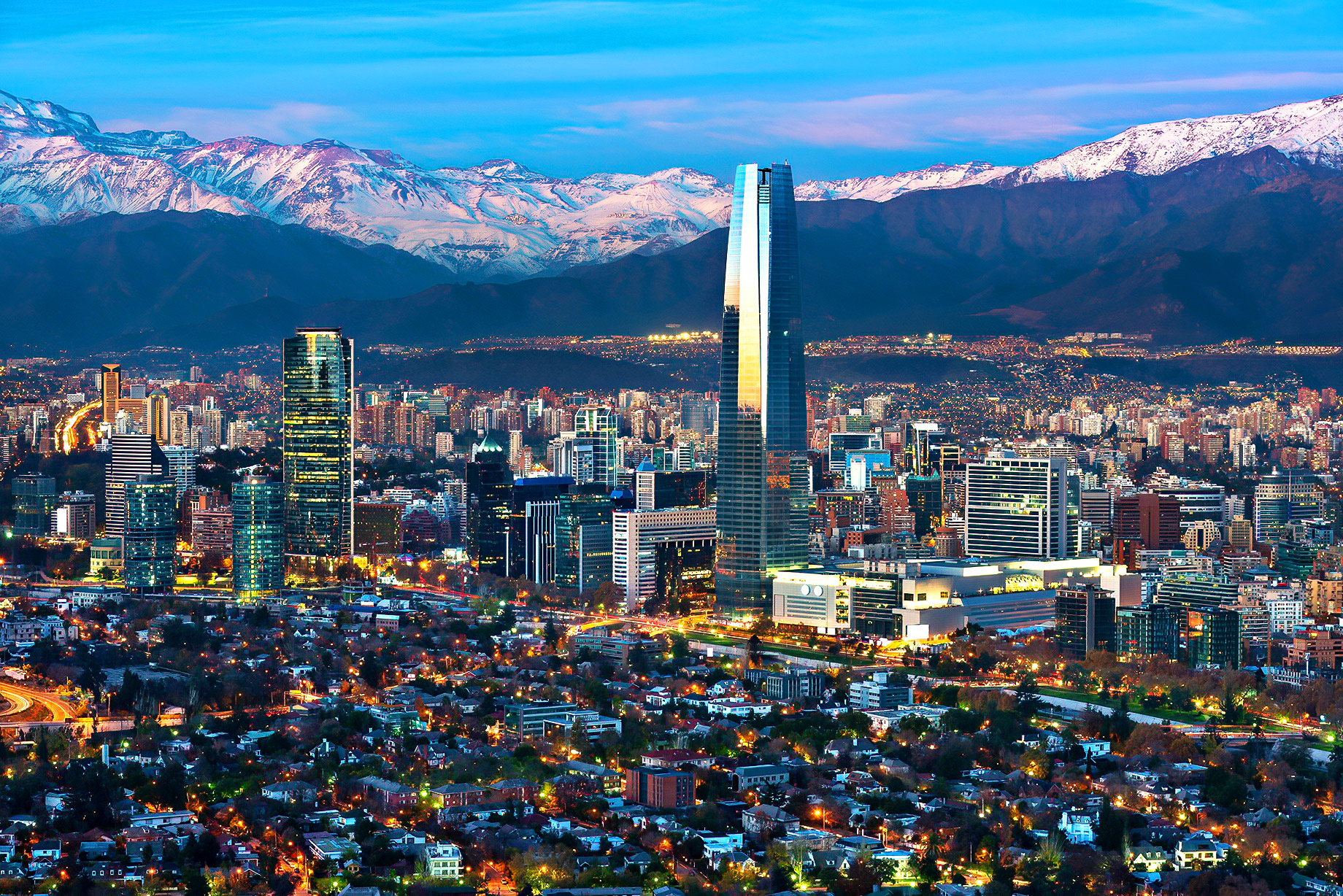
With more than six million people, the capital of Chile, Santiago, has more than 40% of the country’s population. It was founded almost 500 years ago by Pedro de Valdivia in 1541. It’s surrounded by mountains and volcanoes of the Andes Mountain Range, creating spectacular views from every angle. One of the closest volcanoes, Maipo, erupted over 450,000 years ago, believed to be one of the most extreme volcanic events in the world.
The Tupungatito, San José, and Marmolejo volcanoes—also around the city—are active and are part of the mountainous beauty surrounding Santiago. Among the highest visible mountains is El Plomo, which was an Inca ceremonial center called Apu. Although the Inca empire was strongest in Peru, it’s important to remember that it extended into Bolivia, Chile, and part of Argentina, so there are many archaeological sites in the territories surrounding Santiago as well.
The Chilean capital has evolved into a cosmopolitan and modern city. Today, there are not only pre-Hispanic ruins, but colonial architecture mixed with neoclassical and modern. Downtown you can appreciate buildings, skyscrapers, and the best hotels in Santiago, Chile, as well as parks full of life and history. The old meeting the new.
A bit of Chilean history

Pedro de Valdivia arrived in the Mapocho Valley after a long journey from Cusco. He established relations with the indigenous people of the area and proposed to them to build a city in the name of King Charles I of Spain. The Indians granted an island between two branches of the Mapocho River. In 1541 the city was founded in the name of the apostle Santiago, the patron saint of Spain.
When the city was founded, the main Plaza de Armas was built, which still exists today, as well as the surrounding buildings, which were once the houses of Pedro de Valdivia and other conquistadors. A church was built in the square, today the Metropolitan Cathedral. Nowadays, you can find the Central Post Office building, the National Historical Museum, and the Santiago Municipality Building. It’s full of life during the day, where you can find musicians, artists, and monuments that refer to Chilean history.
A neoclassical oasis in the historic center

The Metropolitan Cathedral is one of the oldest buildings. It was completed at the end of the seventeenth century but has been repaired and rebuilt thanks to the many earthquakes in the area. Inside, you can appreciate great works of art, in addition to its magnificent neoclassical architecture. The sculpture of St. Michael the Archangel is one of the most important pieces of art, carved from a single piece of wood.
The National Historical Museum is housed in a building constructed in 1808 as the Palace of the Royal Audience. Today it houses objects and artifacts that tell the story of Chile’s history. The rooms and exhibits are arranged chronologically from the first inhabitants, the discovery of America, reaching the conquest and the different events of the nineteenth and twentieth centuries in Chile.
Another of the emblematic buildings of Santiago de Chile is located very close to the Plaza de Armas. The Palacio de la Moneda (Mint Palace) was built between 1786 and 1812 to house the mint during the colonial era. Guided tours are made to some areas, so it’s recommended to visit. Its architecture is very elegant, which highlights the abundance of ornamental elements and furniture of the time.
Although the list of places of interest in the historic center is endless, you cannot miss the Cerro de Santa Lucia. From this small hill, you can enjoy a great view of the city from above. At the top is the Hidalgo Castle, surrounded by historical monuments, fountains, terraces, and gardens.
Meeting the new

Another important high point in Santiago is the Cerro San Cristobal. From here, you can enjoy a view of the city with the Andes in the background. Not only is the sight impressive, but we begin to get to know the new face of the capital city.
The main highlight is the Gran Torre Costanera. This 300-meter-tall (984.2 feet) skyscraper belongs to the complex called Costanera Center. The whole area is full of parks and modern buildings, shopping malls, office buildings, and two of the best hotels in Santiago, Chile.
For architecture lovers, another interesting point is the Gabriela Mistral Cultural Center, designed by Cristián Fernández Arquitectos and Lateral Arquitectura & Diseño. Intervening an old building near Cerro Santa Lucia, this cultural center is made of steel and concrete in an unconventional colour. Plays, performances, and music and dance recitals are some of the activities that can be enjoyed, in addition to acting as a great place for teaching the arts. Santiago de Chile is an excellent example of where the new and the old meet.
